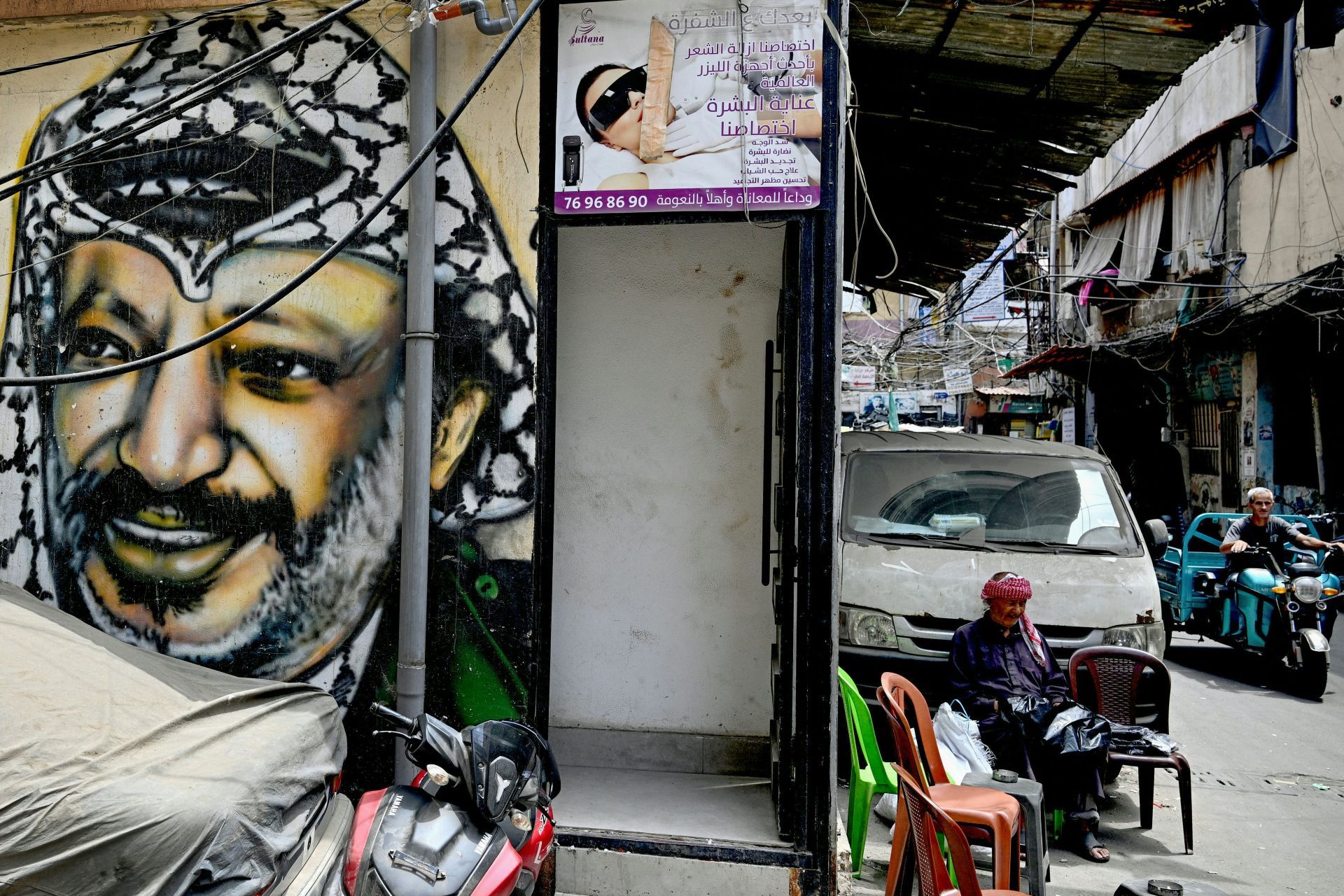
The disarmament of Palestinian refugee camps in Lebanon will begin in mid-June, based on an agreement with Palestinian President Mahmoud Abbas, who is on an official visit to Lebanon, a Lebanese government official told AFP on Friday.
Following the creation of Israel and the Nakba in 1948, many Palestinian refugees settled in Lebanon. Lebanon officially hosts 12 Palestinian refugee camps recognized by UNRWA (United Nations Relief and Works Agency for Palestine Refugees in the Near East), spread across the country.
Population figures for the camps vary due to the lack of recent official censuses and the movements of people, especially the arrival of Syrian and Palestinian refugees from Syria since 2011, as well as the war with Israel, which has caused further displacements. According to UNRWA, about 45% of Palestinian refugees in Lebanon live in these 12 official camps. Lebanon also hosts over 40 informal Palestinian refugee gatherings, not officially recognized, where many refugees live in often precarious conditions. The wealthier among them live within Lebanese cities.
As of February 2025, UNRWA’s office in Lebanon recorded 222,000 Palestinians residing in Lebanon, including 195,000 Lebanese Palestinians and 27,000 Syrian Palestinians. The agency currently estimates that approximately 248,000 Palestinian refugees and their families receive its services in Lebanon.
Beirut:
- Burj al-Barajneh: Established in 1948 by the League of Red Cross Societies, located in Beirut's southern suburbs, 4 km from the city center. Originally housed about 3,500 people. Partially destroyed during the 1982 Israeli invasion and the Lebanese Civil War. By the end of 2023, 20,676 people were registered with UNRWA, half Palestinian and half Syrian. The 2017 official census recorded 18,351 residents.
- Sabra-Shatila: Established in 1949, located east of the Sports City Stadium in the Ghobeiry municipality of Beirut. Severely affected during the 1982 Israeli invasion and the civil war. By the end of 2023, 11,611 were registered with UNRWA, about two-thirds Syrian. The 2017 census estimated 14,010 residents.
- Mar Elias: Located in southern Beirut, west of the UNRWA office. Founded in 1952 by the Saint Elias Congregation for Palestinian refugees from Galilee. According to the 2017 census, 1,767 people (mainly Palestinians and Syrians) lived there. UNRWA registered 746 residents by the end of 2023.
- Dbayeh: Located 12 km north of Beirut, established in 1956 on a hill overlooking the Beirut-Tripoli highway. UNRWA registered 4,636 people in 2023, compared to 1,772 in the 2017 census.
North Lebanon:
- Nahr el-Bared: Created in 1949 by the Federation of Red Cross Societies for refugees from Upper Galilee and northern Palestine. Located near the Mediterranean, 16 km from Tripoli. In 2023, UNRWA registered 48,421 residents, while the 2017 census recorded 9,470, mostly Palestinians.
- Beddawi: Established in 1955 on a hill 5 km northeast of Tripoli. Over decades, received displaced refugees from camps like Nabatiyeh and Tal al-Zaatar (destroyed in 1974 and 1976). UNRWA registered 22,817 people in 2023, the 2017 census recorded 17,995, mostly Palestinians and some Syrians.
Saida:
- Ain el-Helweh: South of Saida, the largest Palestinian refugee camp in Lebanon. Inhabited since 1948, mostly by coastal Palestinians. Hosts many displaced from other parts of Lebanon during the civil war and post-2007 Nahr el-Bared conflict. UNRWA registered 64,143 people in 2023, the 2017 census recorded 21,209 (mostly Palestinian).
- Mieh Mieh: Located south of Saida, founded in 1954. Covers 63,000 m². Severely damaged in the 1982 Israeli invasion and again in 1991 during clashes between Palestinian militants and the Lebanese army. UNRWA registered 6,196 residents in 2023, the 2017 census recorded 2,359.
Tyre:
- Rashidieh: Located 5 km south of Tyre, heavily damaged during the 1982–1987 civil war period. Divided into an old section (built in 1936 for Armenians by the French) and a new one (built by UNRWA in 1963 for Palestinians). UNRWA registered 36,595 in 2023, the 2017 census recorded 9,656.
- El Buss: 1.5 km south of Tyre, near Roman ruins. Initially built by the French in 1939 for Armenians, later repopulated by Palestinians from Acre. UNRWA registered 13,081 in 2023, the 2017 census recorded 5,234.
- Burj Shemali: 3 km from Tyre, founded in 1948 for refugees from Hawla, Tiberias, Saffouriyah, and Lubieh. Also received displaced refugees from other Lebanese areas. Severely damaged in the 1982 Israeli invasion. UNRWA registered 26,569 in 2023, the 2017 census recorded 10,218.
Baalbeck:
- Al-Jalil: Originally a French army barracks, located 90 km east of Beirut in the Beqaa Valley near Baalbeck. Became a refugee camp in 1948. UNRWA took over services in 1952. Many residents still live in the old barracks, lacking proper light and ventilation. UNRWA registered 9,993 in 2023, the 2017 census recorded 2,165.
Palestinian refugees in Lebanon do not have citizenship and face strict legal restrictions. They are barred from many professions, cannot own property, and have limited access to public services, which contributes to their marginalization and economic hardship.
Some camps, like Ain el-Helweh, have become “lawless zones” where Lebanese state authority is limited. These camps host various sometimes-conflicting Palestinian factions, leading to sporadic violence. The presence of armed groups and the lack of state control pose major security challenges for Lebanon.
Under a tacit agreement, security in the camps is maintained by Palestinian factions affiliated with both Mahmoud Abbas' Fatah and its rival Hamas, among others. However, Lebanon's new government seeks to extend state authority across the entire country, including within the Palestinian camps.
Lebanese President Joseph Aoun and the Palestinian president stated in a recent meeting that there will no longer be weapons outside the control of the Lebanese State in Lebanon.




Comments